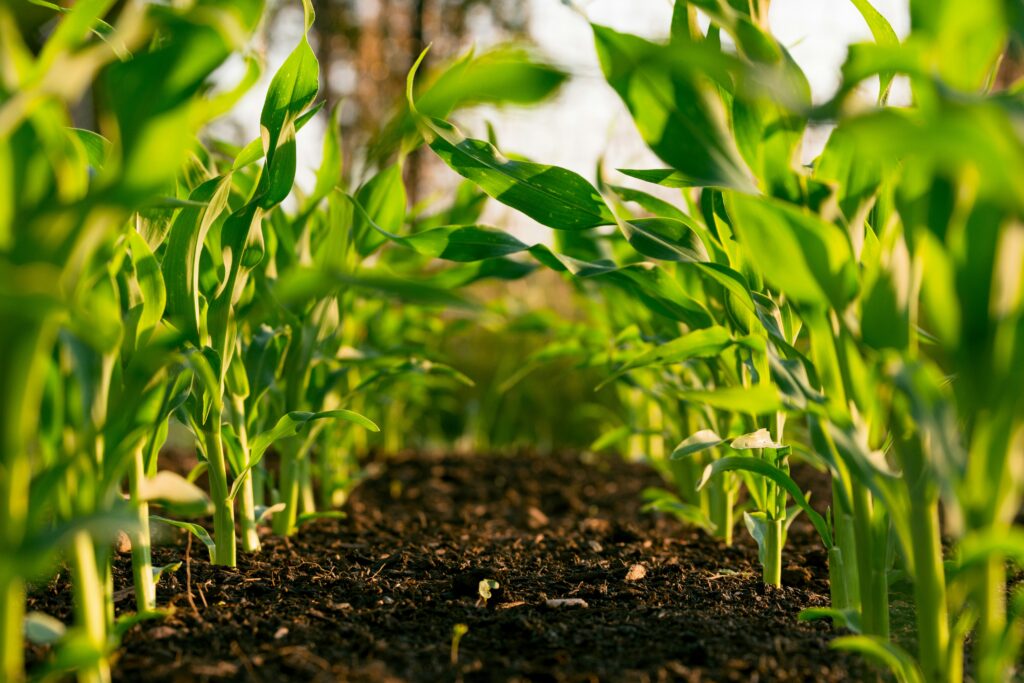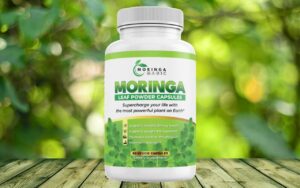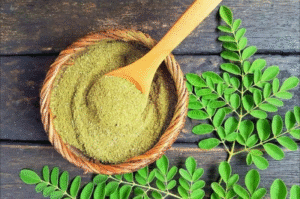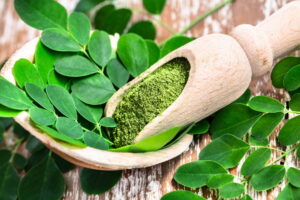
Curious why so many people talk about moringa? This hardy tree has fed families, flavored meals, and supported traditional medicine for centuries. Today, it’s also a rising star in nutrition circles for its dense nutrient profile and practical uses. In this guide, you’ll learn where moringa comes from, how people use it, what’s inside its leaves and seeds, and what to watch out for before adding it to your routine.
Key takeaways:
- Moringa is a fast-growing tree native to South Asia, now cultivated across the tropics.
- People eat its leaves and pods, press its seeds for oil, and use various parts in traditional remedies.
- Its leaves pack vitamins, minerals, complete amino acids, and antioxidant compounds.
- It shows promise for daily nutrition, culinary uses, skincare, and community food security.
- It’s not risk-free: be mindful of medication interactions, quality, and dosing.
What Exactly Is Moringa?
Moringa (Moringa oleifera) is a drought-tolerant tree from the Himalayan foothills of India and Nepal. It goes by many names: drumstick tree (for its long seed pods), horseradish tree (for the pungent roots), and ben oil tree (for the oil pressed from its seeds). Farmers value it because it grows fast, tolerates poor soils, and remains productive during dry seasons when other crops fail.
Botanically, moringa belongs to the Moringaceae family. The species most widely used is M. oleifera, though other species grow in Africa and Madagascar. The parts people typically use:
- Leaves: eaten fresh, cooked, or dried and powdered
- Pods (“drumsticks”): cooked in curries and stews
- Seeds: eaten in some cuisines; pressed for a light, stable oil
- Flowers: used in teas and recipes in small amounts
- Roots and bark: used in traditional medicine with care due to higher potency
Where Did Moringa Come From? A Brief Origin Story
Moringa’s documented use stretches back thousands of years in South Asia. Ancient texts describe it as a multipurpose plant for food and wellness. As trade routes expanded, moringa spread to Africa, the Middle East, and later to Latin America and the Caribbean. Today, it’s cultivated widely in India, the Philippines, Indonesia, Kenya, Ghana, Nigeria, and parts of Central America.
Agronomists and public health groups promote moringa in regions with limited access to diverse produce. Its resilience and nutrient density make it a strategic crop for community gardens and school feeding programs.
How Cultures Use Moringa Around the World

Moringa carries deep cultural significance as both food and medicine.
- South Asia: In India and Sri Lanka, young pods flavor sambar and other dishes. Leaves go into stir-fries (poriyal), dals, and chutneys. Traditional systems like Ayurveda reference moringa for digestion, energy, and skin health.
- Southeast Asia: In the Philippines, leaves (malunggay) enrich soups like tinola and are added to noodles and breads.
- East and West Africa: Communities cook leaves like other greens, dry them for storage, and use seed powder in small-scale water clarification. In some regions, moringa hedgerows prevent erosion and provide fodder.
- Caribbean and Latin America: Dishes use leaves in stews and rice; smallholders grow moringa as a kitchen-garden staple.
Beyond the table, moringa features in ceremonies, folk remedies, and local economies. Seed oil, known as ben oil, once perfumed ancient lamps and still appears in cosmetics because it resists rancidity.
Nutritional Profile: What’s Inside Moringa Leaves?
Moringa leaves are the main edible part used for nutrition. While values vary by soil, climate, and processing, dried leaf powder typically contains:
- Vitamins: notable amounts of vitamin A (as beta-carotene), vitamin C, vitamin K, and several B vitamins (including folate).
- Minerals: calcium, potassium, iron, and magnesium in meaningful quantities.
- Protein: unusually high for a leafy green, with all nine essential amino acids.
- Fiber: supports regularity and gut health.
- Phytochemicals: antioxidants like quercetin, chlorogenic acid, and other polyphenols; sulfur-containing compounds (isothiocyanates) with anti-inflammatory potential.
What this means in practice:
- A small serving (about 1–2 teaspoons of leaf powder) can help fill gaps when fresh produce is limited.
- The presence of complete amino acids boosts the overall quality of plant-based meals.
- Antioxidants contribute to the body’s defenses against everyday oxidative stress.
Note: Iron in plants is non-heme, which the body absorbs less efficiently than heme iron from animal sources. Pairing moringa with vitamin C–rich foods (citrus, tomatoes) can improve iron absorption.
Beyond Leaves: Pods, Seeds, Flowers, and Oil
- Pods: Young, tender pods are rich in fiber and vitamin C when fresh. They have a mild flavor and hold up well in soups and curries.
- Seeds: Eaten sparingly in some cuisines; more commonly pressed for oil.
- Flowers: Used in teas and lightly cooked dishes; they’re delicate and aromatic.
- Oil (Ben oil): A pale, odorless oil high in oleic acid, prized in skincare and haircare. It’s stable and doesn’t go rancid quickly, which is useful in warm climates.
Practical Uses at Home

- Cooking: Stir fresh leaves into eggs, dals, soups, and sautéed dishes. Add leaf powder to smoothies, oatmeal, sauces, or baked goods. Heat can reduce some vitamins, so add powder near the end of cooking.
- Tea: Moringa teas offer a light, green flavor with a lower dose than powders or capsules.
- Skincare: A few drops of moringa seed oil can soften dry patches and help seal in moisture. It layers well under sunscreen or makeup. Patch test first.
- Garden and homestead: The tree’s prunings become mulch. In some contexts, powdered seeds are used for clarifying turbid water by helping particles clump together before filtration.
What Does the Research Say?
Human studies on moringa are growing but still limited in size and duration. Early evidence suggests:
- Nutrient support: Regular intake can raise overall antioxidant intake and may help with micronutrient gaps.
- Metabolic markers: Some small trials associate moringa leaf consumption with modest improvements in post-meal blood sugar and lipid markers when combined with healthy diet patterns.
- Inflammation and oxidative stress: Lab and animal studies show anti-inflammatory and antioxidant activity; translation to consistent clinical outcomes requires more research.
Bottom line: moringa is best viewed as a nutrient-dense food that supports a balanced diet not a cure-all.
How to Choose Quality Moringa
Because supplements and powders can vary, pay attention to:
- Color and aroma: Bright green powder with a fresh, grassy smell often signals better processing. Brownish or musty-smelling powder may be oxidized or old.
- Sourcing: Look for brands that specify farm origin, harvest methods, and drying techniques (low-heat drying helps preserve nutrients).
- Testing: Third-party testing for heavy metals, microbial contamination, and pesticides adds a layer of assurance (e.g., USP, NSF, ISO-accredited labs).
- Packaging: Opaque, airtight containers protect against light and moisture. Store in a cool, dry place.
Serving Ideas and Starting Amounts
Taste profile: earthy, slightly peppery between spinach and matcha.
Easy ways to try it:
- Smoothie: Blend 1 teaspoon with banana, pineapple, or mango to mellow the flavor.
- Savory boost: Stir 1 teaspoon into soups or lentils just before serving.
- Yogurt bowl: Mix 1/2–1 teaspoon into yogurt with honey and berries.
- Energy bites: Add 1–2 teaspoons to a batch for a subtle green lift.
Common amounts:
- Beginners: 1/2 to 1 teaspoon (about 1–2 grams) per day.
- Regular use: 2–4 teaspoons (4–8 grams) per day, split across meals.
- Capsules: Check labels; many contain 400–1000 mg per capsule. Follow directions.
Increase gradually to watch for tolerance and avoid stomach upset.
Cultural and Economic Significance
Moringa plays a role beyond nutrition:
- Food security: Its resilience makes it a hedge against crop failures. Leaves can be harvested repeatedly, dried, and stored, supporting schools and community kitchens.
- Smallholder income: Farmers sell fresh leaves, powders, and oil locally and in export markets, creating value chains in rural areas.
- Environmental services: As a fast-growing tree, moringa provides shade, windbreaks, and erosion control. Its deep roots help stabilize soils in degraded lands.
These traits explain why development programs often include moringa in agroforestry and nutrition initiatives.
Things to Be Mindful Of: Safety, Interactions, and Limits
Moringa is generally safe as a food, but there are important caveats.
Potential side effects:
- Digestive discomfort: Gas, bloating, loose stools, or cramps can occur with larger servings. Start small and increase slowly.
- Blood pressure: Moringa may have mild blood-pressure–lowering effects. If you tend toward low blood pressure, monitor how you feel.
- Blood sugar: Moringa may enhance glucose-lowering effects. Watch for signs of hypoglycemia if you use insulin or diabetes medications.
Medication interactions:
- Diabetes medications: Risk of additive blood sugar lowering; monitor readings and consult your clinician.
- Antihypertensives: Possible additive effects; track blood pressure.
- Blood thinners (e.g., warfarin): Leaf powder contains vitamin K, which can affect dosing. Keep intake consistent and coordinate with your healthcare provider.
- Thyroid medications: Limited evidence hints at possible influence on thyroid function. If you take levothyroxine, separate dosing by several hours and talk with your clinician.
Special populations:
- Pregnancy: Avoid bark and root due to potential uterine effects. Leaf amounts in food are generally considered safer, but discuss with your obstetric provider.
- Breastfeeding: Traditional use suggests possible support for milk production, but evidence is mixed. Consult a lactation professional.
- Children: Use food-like amounts rather than concentrated supplements unless advised by a pediatrician.
- Kidney concerns: Moringa contains potassium. If you’re on a potassium-restricted diet, review intake with your nephrologist or dietitian.
Quality and contamination:
- Only buy from reputable brands with transparent testing. Poor-quality products can contain heavy metals, microbes, or pesticide residues.
Overconsumption risks:
- More is not better. High doses can trigger GI upset and may crowd out other foods. Stay within modest daily amounts and evaluate how you feel.
Allergies and sensitivities:
- Rare, but possible. If you develop a rash, itching, or breathing issues after ingestion or topical use, stop and seek medical care.

Frequently Asked Questions
Is moringa a superfood?
It’s nutrient-dense and versatile, but “superfood” is a marketing term. Think of moringa as a helpful, affordable staple not a magic bullet.
Does cooking destroy nutrients?
Heat can reduce vitamin C and some antioxidants, but cooked moringa still offers minerals, fiber, and protein. Balance raw and cooked forms for variety.
Can I use moringa oil for cooking?
Moringa seed oil is stable and edible, but most people prefer it for skincare due to cost and neutral flavor. If you cook with it, use it as a finishing oil.
How soon will I notice effects?
Some people notice steadier energy or improved regularity within one to two weeks. Markers like lipids or blood sugar require consistent use and lifestyle support over weeks to months.



